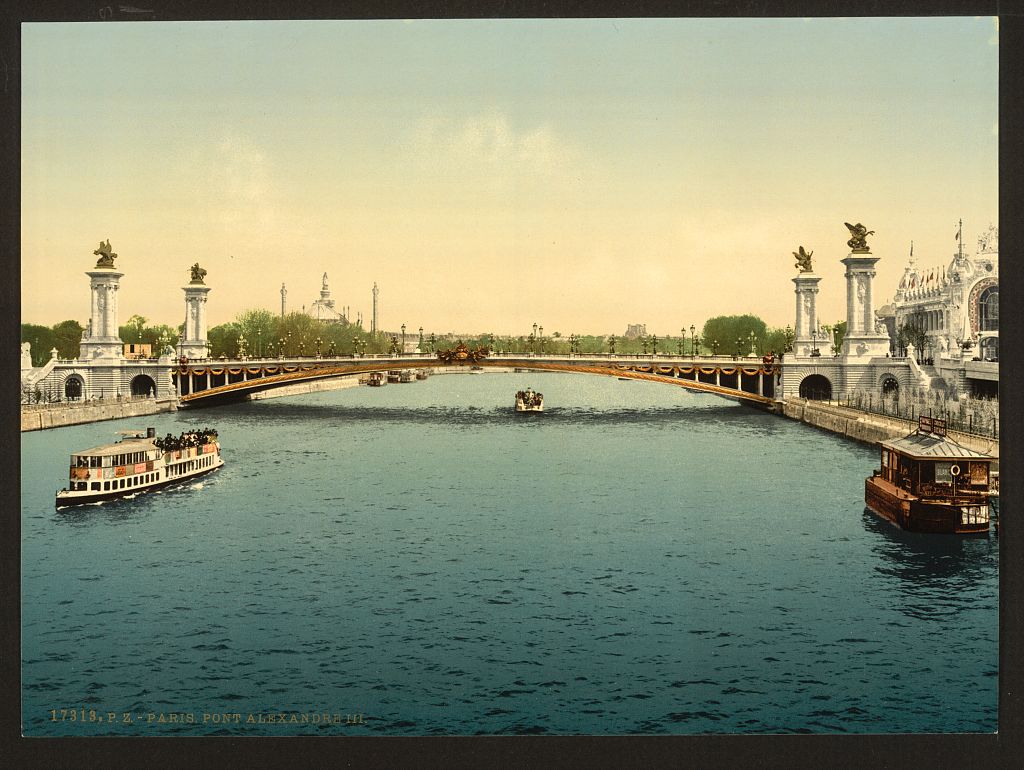
[Photo Credit: Alexandre III, bridge, Exposition Universal, 1900, Library of Congress Prints & Photographs Division.]
The bridge known as the Pont Alexandre III was one of the 1900 Exposition’s technological wonders. Constructed of steel and more than 350 feet in length, it spanned the Seine using only a single arch. Its dramatic four towers were actually pylons, created to help support the bridge’s immense weight. Named in honor of the Russian Tsar, Alexandre III, its cornerstone was laid in 1896 by his son, Nicholas. The fair (and the bridge) both opened on April 14, 1900. Though most of the Exposition’s architecture was temporary—and was torn down when the fair closed seven months later—this bridge survives as a dramatic reminder of a magnificent Exposition. Julia wrote to the LeBruns on 11 February 1899:
“The new bridge spans are in place and the towers quite advanced – We gaze with wonder at the scaffoldings and false work they use – Why, the iron fake work for this bridge is an immense bridge in itself and took as long to build and put over. . . .”
[Julia Morgan Papers, Special Collections, California Polytechnic State University, San Luis Obispo, 2-D-17-13.]

Recent Comments